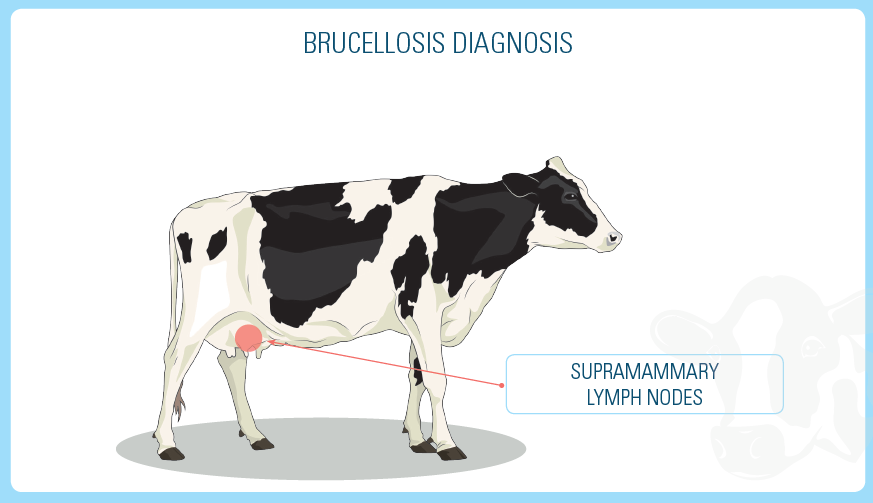

Brucellosis
Also known as contagious abortion or Bang’s disease, bovine brucellosis is a contagious bacterial disease that has a significant impact on the health of cattle and the general public. It is a widespread zoonosis that can be transmitted through direct contact with infected animals or the consumption of contaminated raw animal products.
Brucellosis is a significant threat to livestock because the bacterial infection has severe economic consequences that include decreased milk production, weight loss, abortion, infertility, and lameness.
After infection, Brucella abortus bacteria enter via mucous membranes and invade the udder, lymph nodes, and uterus. The bacteria are shed in milk and uterine discharges.

Brucellosis is primarily a reproductive disease in animals and the most common clinical manifestations are associated with reproduction: abortions, increased calving interval, poor conception rates, retained placentas, and stillbirth.
Brucella abortus can be recovered from the placenta, stomach, and lungs of an aborted fetus. When uterine involution is completed, cows stop shedding the bacteria from the uterus but foci of the infection remain in supramammary lymph nodes and in the udder. Thus, udder secretions are the preferred specimen used for the isolation of bacteria.

Agglutination tests for the detection of antibodies in serum, milk, whey, and semen are the standard diagnostic method.

Other tests available:
- Complement fixation
- Rivanol precipitation
- Acidified antigen procedures
The complex nature of brucellosis in cattle makes it harder to treat. Although there is not an effective antibiotic treatment available for brucellosis, antibiotics have proven beneficial against the infection when administered in combinations.
Control of brucellosis is based on preventive herd management strategies including:
- Maintaining closed herds.
- Recording individual animal identification
- Diagnostic tests and necropsies for potentially or suspected brucellosis infected cattle: test animals and/or fetuses after abortion
- Replacement animals: only introduce vaccinated or nonpregnant heifers into the herd after a quarantine of 30 days and when retested and negative for antibodies
- Vaccination of calves with B. abortus Strain 19 or RB51 increases resistance to infection
Eradication programs have been applied in many areas and include:
- Depopulation of herds if herds are severely affected
- Identification of market animals for tracing
- Surveillance to find infected animals
- Investigation of affected herds
- Vaccination of replacement calves in brucellosis-affected areas
People can become infected by brucellosis through:
- Consumption of raw milk or unpasteurized milk products with Brucella bacteria
- Direct contact to infected animal fluids
- Aerosol exposure
People who work with animals are at higher risk of exposure to the infection, and primary clinical signs include:
- Flu-like symptoms (fever, night sweats, headaches, back pain)
- Arthritis (joint pain)
- Re-occurring fevers
Nicoletti P. Brucellosis in Cattle. MSD Veterinary Manual. https://www.msdvetmanual.com/reproductive-system/brucellosis-in-large-animals/brucellosis-in-cattle Facts about brucellosis. Animal and Plant Health Inspection Service. United States Department of Agriculture

